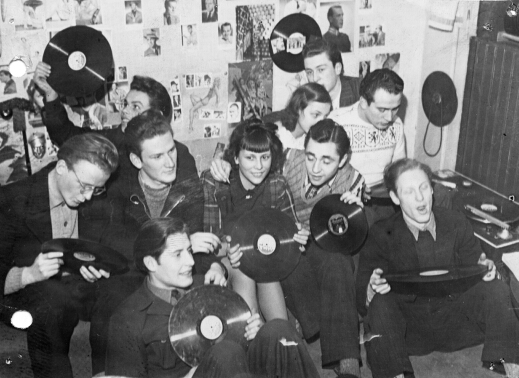Source

Source: Photo courtesy of Stephan Wuthe.
Jazz and swing music were very popular in Germany in the first half of the twentieth century. During the Weimar period, as American goods and culture flooded into Germany under the Dawes Plan, many Germans—particularly of the younger generation—developed a taste for jazz. When the Nazis came to power in 1933, however, they argued that jazz and swing were “degenerate” art forms. The Nazi regime associated it with black culture of the United States and a Jewish vice. But these claims did not stop young Germans from indulging in their favourite past time, as is depicted in this image.
The issue for historians is whether listening to jazz music constitutes a form of resistance. One could potentially listen to jazz, frequent a swing club, and support the Nazi racial project of creating the Volksgemeinschaft. Over time, some jazz clubs did become political in nature. The Swingjugend (Swing Kids) is an excellent example. Many young teens in the Swingjugend resisted joining the Hitler Youth and developed a network of communication with the White Rose, an active dissident group at a university in Munich. But to what extent is that group an exception, rather than the rule: did non-conformist behavior reflect resistance to the Nazi regime and its racial worldview?

Source: Photo courtesy of Stephan Wuthe.